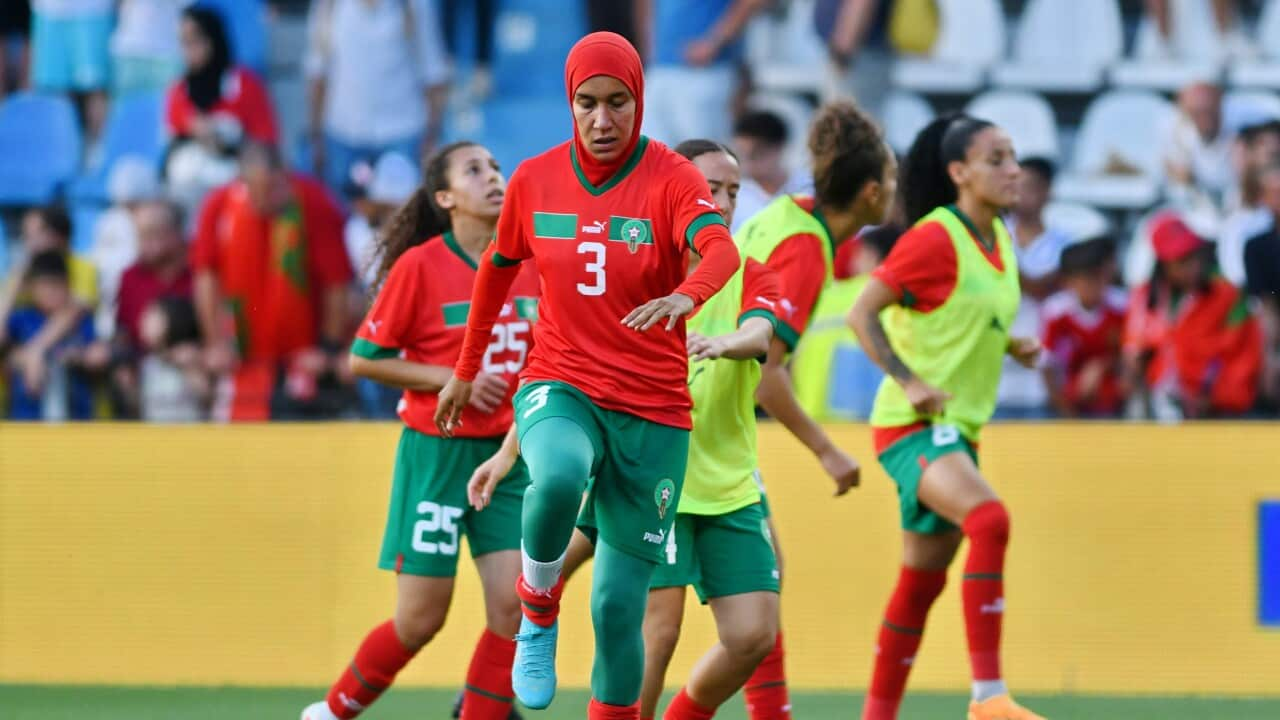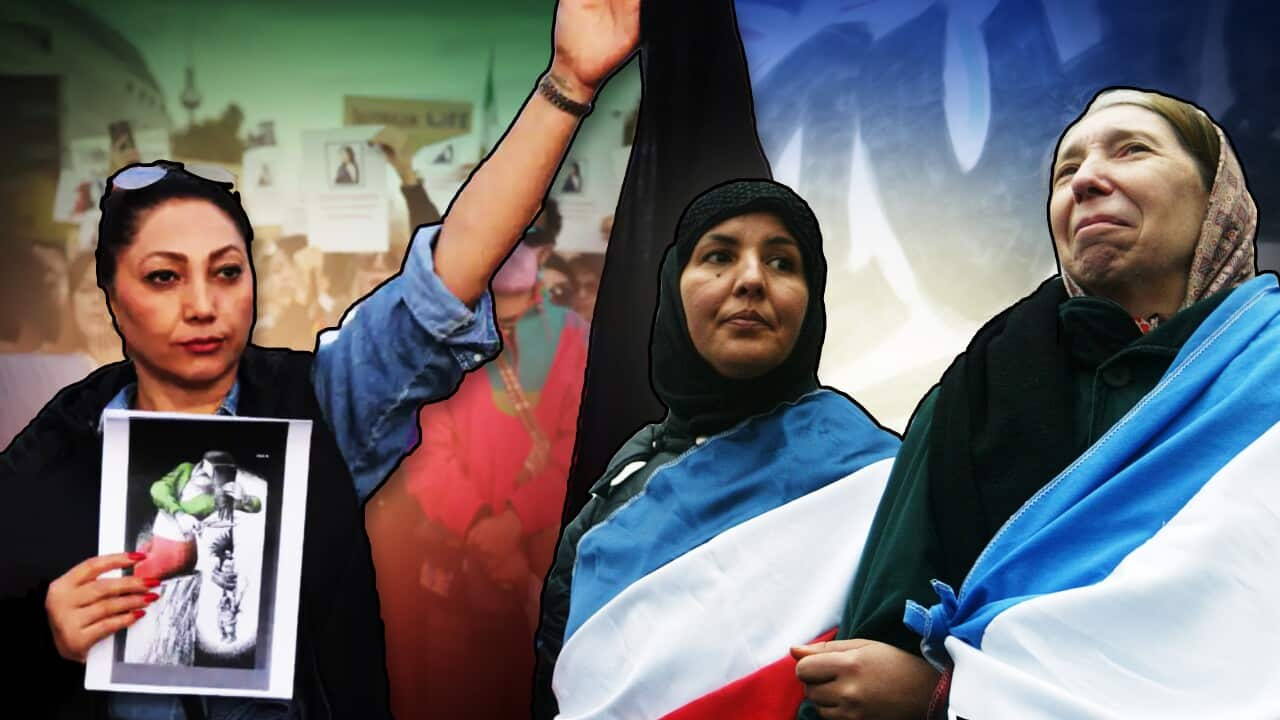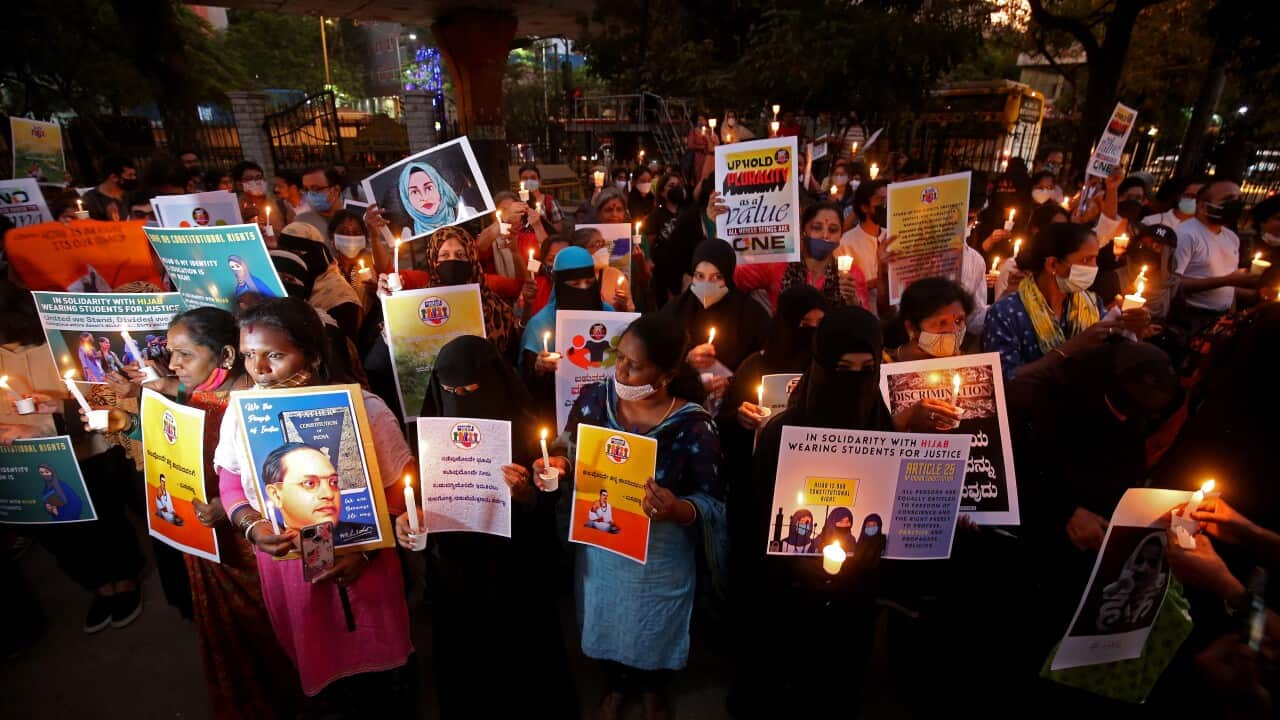Key Points
- Nouhaila Benzina is set to be the first woman to wear a hijab at the FIFA Women's World Cup.
- The governing body overturned the ban on head coverings in 2014.
- A French court upheld the decision to ban the hijab in football.
Nouhaila Benzina is part of the Moroccan squad that has qualified for the FIFA Women's World Cup for the first time, making them the only Arab team to achieve this feat.
The 25-year-old will be wearing a hijab when Atlas Lionesses take on Germany in their first group-stage game.
"Lots of work was done over many years, and thank God it had a positive result," Benzina told Al Jazeera.
"We hope to play at a high level and honour Moroccans."
The hijab was banned by the sport's governing body in 2007 due to concerns over player safety. It was eventually overturned in 2014, but a head covering has not been worn at the World Cup before.
The ban led to Iran's football team pulling out of Olympic qualifying matches and prevented an unknown amount of grassroots footballers from getting involved.
Several sports have moved to lift bans on head covering in recent years, including basketball and volleyball.
Are hijabs still banned in sport?
But in France, the top administrative court upheld a decision to ban the hijab in football, in contrast with FIFA's policies.
Les Hijabeuses, a women’s footballing collective, had brought the case arguing it was Islamophobic and preventing women from participating in sport.
They argued that Christian players are permitted to make the sign of the cross during play.
But the French Football Federation maintains that permitting hijabs on or near the pitch goes against a 1905 law on secularism.
The ban also covers "any sign or clothing clearly showing political, philosophical, religious or union affiliation" and would therefore apply to other garments, including the Jewish yarmulke.
A ban on hijabs under international basketball guidelines was overturned in 2017 after a hard-fought campaign by athletes, including Bilqis Abdul-Qaadir, who had to leave the sport in the years the hijab was banned, saying she chose her faith over her career.
But basketballer and activist Salimata Sylla earlier this year said she was banned by the French basketball governing body for wearing a hijab during games in her French league.
With the country's capital hosting the 2024 Olympics, some fear local basketball and football bans on hijabs could have an impact on other athletes.
The International Olympic Committee has refused to comment on the issue, instead reiterating there is no discrimination at the Olympics.
Hijabi athletes were excluded from the Olympic Games until 1996, but boxers, weight lifters, runners, fencers and judo athletes have since worn it at the competition.
Zahra Lari was the first figure skating athlete from the United Arab Emirates and competed at the PyeongChang 2018 qualifiers for the Winter Olympics.
Egypt's Doaa Elghobashy was the first beach volleyballer to wear the hijab at the Olympics, at Rio 2016, with tabloid newspapers making much of the contrast between her outfit and her opponent's bikini.
In Australia, the hijab is permitted in netball, and rugby league doesn't have any specific guidelines on head coverings, but state players may not wear anything considered 'dangerous'.
Aussie Rules' Auburn Giants Australian Football team was the first to be made up of Muslim women and has several players who wear the hijab.
In 2017, sportswear giant Nike unveiled a line of modest swimwear with Muslim women in mind, but the full-body suits are not able to be worn at the sport's top level.
In 2010, swimming's governing body banned full-body suits as they were thought to give athletes too much of an advantage.
It led to three-time Egyptian Olympian Aya Medany quitting her beloved pentathlon because she wasn't able to swim in a full-cover kit.
Nike is one of several companies that have produced 'sports hijabs', which are intended to be lightweight and moisture-wicking to help manage sweat.




